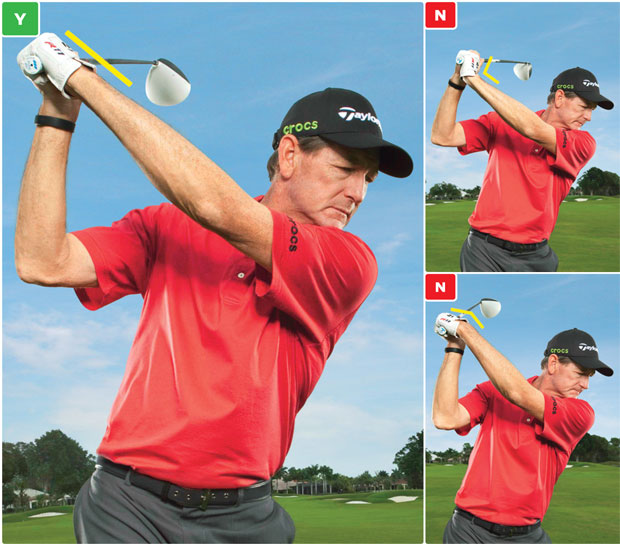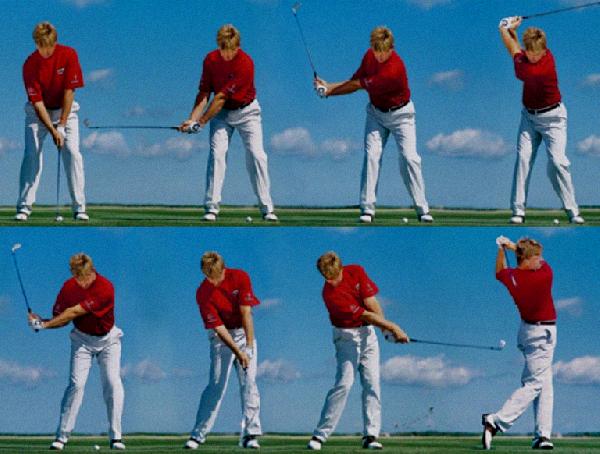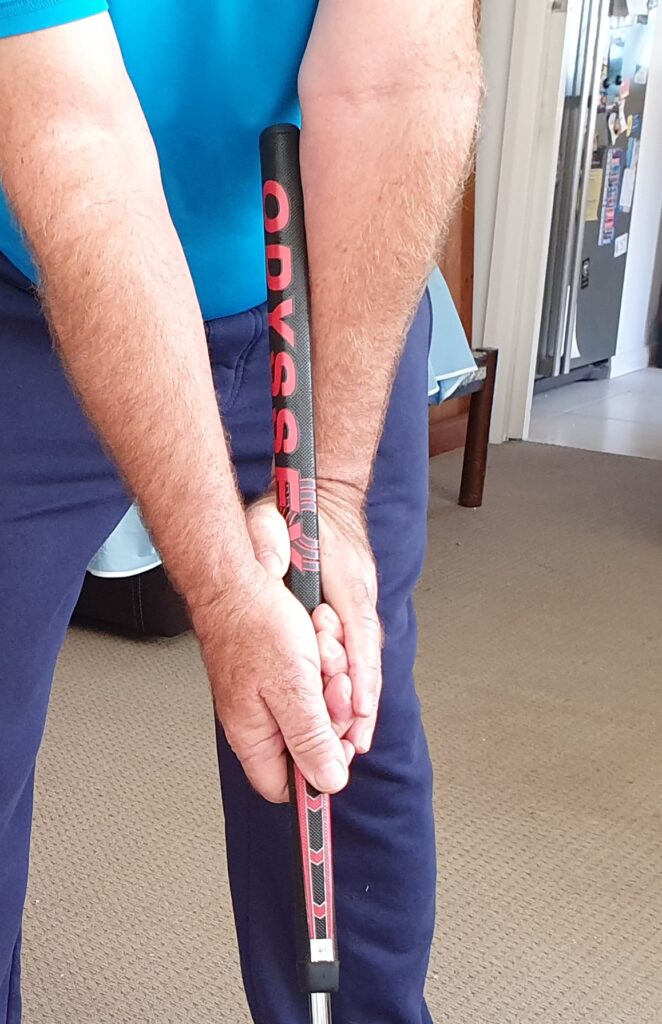This game would be easy if we could hit every green in regulation. If your drive is reasonable and even if your drive is in the light rough you have a good chance that your next shot can reach the green. Unfortunately hitting the perfectly shaped shot to hit the green is the most difficult to make for pros and even more difficult for the Weekend Warriors.
When you are within 160 yards you can easily see the shot that will be ideal to land on or near the green and hold the green. You know the distance that your clubs will reach and you know that your lower lofted clubs will roll-out further on the green than on the fairway. So why is it so difficult to hit the green and stick on the green?
The Problem
For some strange reason, when the pressure is on to make the perfect shot we often push or pull the shot into the deep rough, a trap or the surrounding bushes. If your leading hand grip is completed correctly, the back of your leading hand should be facing directly up your target line. That is also the position that you want your leading wrist at the point of impact in order to hit directly up your target line.
If your club face is slightly open at impact, your ball will fade and if your club face is slightly closed at impact, your ball will draw. Your club face is just an extension of the position of the back of your leading wrist.
The Solution.
Colin Morikawa has the most consistent record for strokes gained when targeting the green. He slightly bows his wrist at the top of his backswing (which is nothing like the exaggerated wrist bow that Dustin Johnson creates and more like Jordan Spieth’s slight wrist bow). Colin’s goal is the same as all professionals. He wants his club to impact the ball when his leading wrist has a slight bow and is pointing directly up his target line.

NOTE: I’m not a PGA pro but I do know that we setup with our leading wrist slightly cupped for our driver and a flat leading wrist for the setup with irons (as the ball position for irons is behind the the ball position for our driver). I have tested bowing my wrist for my driver and my irons at the top of my backswing and find that adding too much of a bow shape on my leading wrist generates hooks and duck hooks. My drives and iron shots are straighter when I limit the bow on my leading wrist (as recommended by Hank Haney). My longest hits with the best directional control happen when I feel that my leading wrist is flat at the top of my swing. I also proved this when practicing with GOLFSTR+ (which is just one of the 6 swing fixes that it give you).
Controlling your leading wrist at the top of your back swing to a flat or slightly bowed position will also help you shallow your club for a more powerful impact up your target line.
Practice swinging your driver, fairway woods and irons with a slight bowed (or A FLAT) leading wrist to determine your best success. The power and strength of pros may generate the best result with a slightly bowed leading wrist but this may not apply to Weekend Warriors. Test your swing with GOLFSTR+. Buy one today at www.GOLFSTR.com
Golf Truism #72: Counting on your opponent to inform you when he breaks a rule is like expecting him to make fun of his own haircut.











